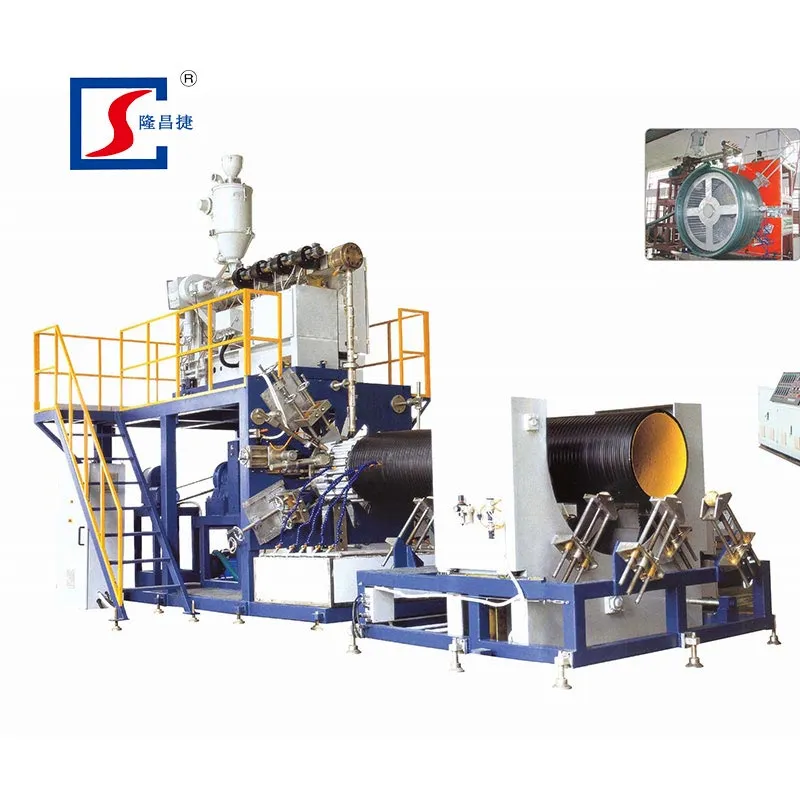The Essential Guide to Pipe Production Lines: From Materials to Advanced Technology
2024-10-25
Pipe production is fundamental to numerous industries, from construction and agriculture to oil and gas. The equipment and processes used to manufacture pipes have evolved significantly, with high-tech machinery and sophisticated production lines now standard in modern pipe manufacturing plants. This guide delves into the core components, types, and innovations that make up a pipe production line.
---

What is a Pipe Production Line?
A pipe production line is a sequence of machines and equipment organized to produce pipes continuously or in batches. These production lines are designed to manufacture pipes of different materials, including metals (steel, aluminum, copper), plastics (PVC, HDPE), and composites. Each material type requires specific processes and technologies to ensure quality, durability, and compliance with industry standards.
Components of a Pipe Production Line
The process varies depending on the material being used, but common components include:
1. Extruders (for plastic pipes): This machine melts the raw plastic material and extrudes it into a tubular shape. It’s essential for plastic and PVC pipe manufacturing.
2. Molds and Forming Machines: These machines shape the material into pipes, applying different techniques depending on whether the pipe is metallic or plastic. Extrusion dies are used for plastic pipes, while rolling and welding machines are used for metal pipes.
3. Cooling Systems: After shaping, pipes are passed through cooling tanks to solidify their shape and stabilize the material. This is especially important for plastic and PVC pipes.
4. Sizing and Calibration Equipment: This equipment ensures pipes meet exact diameter and thickness specifications, helping prevent inconsistencies.
5. Cutting and Chamfering Machines: Pipes are cut into desired lengths and often chamfered (beveled) for easier joining.
6. Testing and Quality Control Systems: Advanced pipe production lines integrate automated testing for thickness, diameter, and other parameters, ensuring that each pipe meets quality and safety standards.
7. Packaging and Stacking Systems: For efficient transport, automated stacking and packaging systems organize the finished pipes for shipment.
Types of Pipe Production Lines
The type of pipe production line varies based on the material, size, and purpose of the pipes being manufactured. Here are some common types:
1. Plastic Pipe Production Lines
- Materials Used: PVC, HDPE, PP, PPR
- Applications: Plumbing, water supply, sewage, and gas pipelines.
- Process: Plastic pellets are melted, extruded, cooled, and calibrated. Plastic pipe production lines are often equipped with extrusion machines and cooling systems for a smooth finish.
2. Steel Pipe Production Lines
- Materials Used: Carbon steel, stainless steel, alloy steel.
- Applications: Oil and gas pipelines, construction, and industrial systems.
- Process: Steel coils are rolled and welded into pipes. For seamless pipes, hot or cold forming processes are used. Testing for pressure and strength is crucial here.
3. Composite Pipe Production Lines
- Materials Used: Combinations of plastics, metals, and fiberglass.
- Applications: High-pressure pipelines, chemical industry, and water distribution.
- Process: Layers of materials are combined through extrusion and other bonding methods to achieve high durability and corrosion resistance.
4. Copper Pipe Production Lines
- Materials Used: Pure copper or copper alloys.
- Applications: HVAC systems, refrigeration, plumbing.
- Process: Copper is drawn or extruded into pipes, then cleaned, polished, and tested for wall thickness and durability.
Technologies and Innovations in Pipe Production Lines
The technology involved in pipe production lines has advanced significantly in recent years, with innovations aimed at increasing efficiency, accuracy, and environmental sustainability.
1. Automation and Robotics
- Automated processes in pipe production reduce human error, improve quality control, and increase production speeds. Robotic arms can assist in loading materials, managing cut-off points, and even in packaging the finished pipes.
2. Real-Time Monitoring Systems
- Sensors and real-time monitoring systems now help detect inconsistencies, ensuring each pipe adheres to strict tolerances. Data from these systems can optimize production speed, monitor energy consumption, and predict equipment maintenance needs.
3. Energy-Efficient Machinery
- Energy-saving components are becoming popular, helping reduce the environmental footprint of pipe manufacturing. For instance, optimized heating systems in extruders reduce power consumption during plastic pipe production.
4. 3D Printing and Customization
- Although not mainstream yet, some manufacturers are experimenting with 3D printing technology to create custom pipe sizes and shapes, which is ideal for prototypes or complex pipe networks.
Benefits of Modern Pipe Production Lines
With advanced equipment and processes, modern pipe production lines offer several key advantages:
- High Output and Efficiency: Automated systems allow for faster production cycles and reduced downtime, meeting high demand efficiently.
- Precision and Consistency: Sizing, cutting, and quality control equipment ensure that each pipe meets industry specifications, improving reliability and safety.
- Customization: Sophisticated machinery allows manufacturers to create pipes in various sizes, materials, and designs to meet specific industry requirements.
- Sustainability: Energy-efficient machinery and environmentally friendly materials help reduce waste and the environmental impact of pipe production.
Applications of Pipe Production Lines
Pipes manufactured from these production lines are crucial across various industries:
- Construction: Pipes for plumbing, drainage, and structural purposes.
- Oil and Gas: High-strength steel pipes used for drilling and pipeline transport.
- Agriculture: Irrigation pipes, often made from PVC or HDPE.
- Telecommunications: Protective casing pipes for fiber-optic and communication cables.
- Automotive and Industrial: Fuel lines, hydraulic systems, and exhaust pipes.
Conclusion
Pipe production lines are a testament to industrial innovation, combining advanced technology with traditional manufacturing processes to produce pipes for a multitude of applications. Whether for infrastructure, utilities, or specialized industries, these lines play an essential role in ensuring that we have high-quality, durable piping systems. With continuous advancements in automation, material science, and energy efficiency, the future of pipe manufacturing promises even greater precision, reliability, and sustainability.


